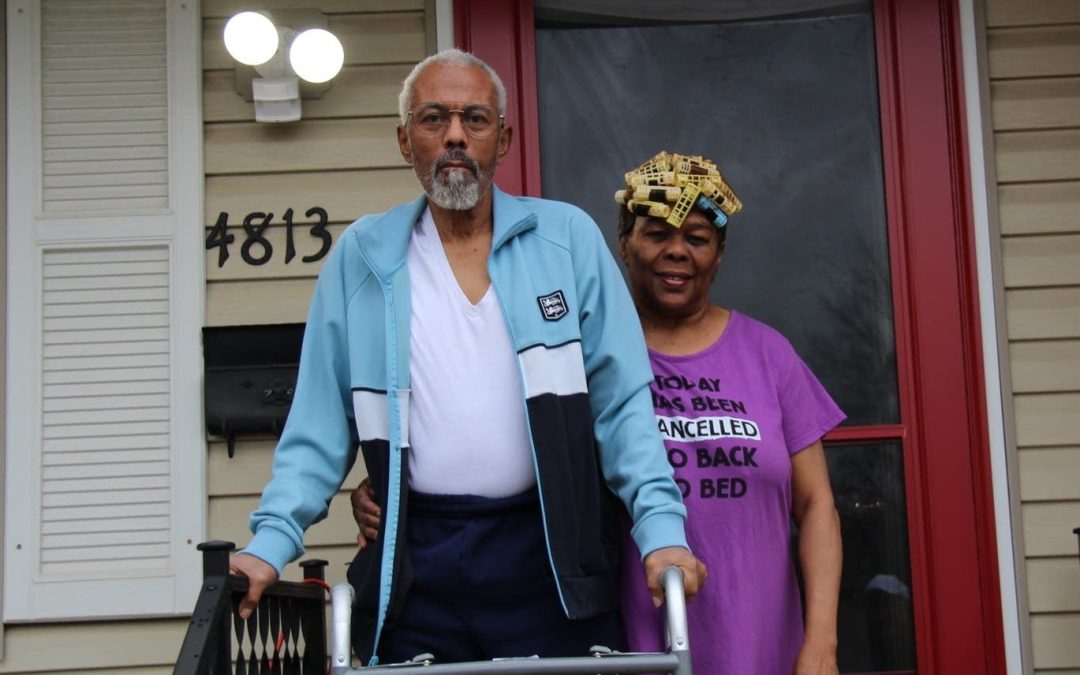Lawrence and Germille P., homeowners served by Age Well At Home
Our work is necessary because it’s needed, especially here in Minnesota. Today we’re sharing articles from accredited organizations that demonstrate the facts behind racial inequity in housing, the rising need for home renovation and rehabilitation, and how housing conditions benefit communities and change lives.
Addressing Racial Inequity in Housing
Our state’s past is fraught with systematic racism that made it nearly impossible for people of color to own homes or even live in certain areas. This impact is still being felt today after generations of families missed out on the opportunity to build wealth through homeownership.
A Brief History of Race & Housing
Twin Cities Habitat for Humanity Learn about the history of racist policies and practices in Minnesota and how homeownership is the key to building wealth and opportunity for people of color. Check out these charts from page 3. You can see just how wide the disparities are when it comes to homeownership and wealth between white and Black households.At Age Well at Home, we prioritize serving homeowners of color because we want to be part of the solution to racial inequity in our communities. Those who were left disadvantaged due to discrimination deserve better now. We are one part of a larger effort to right wrongs and level the playing field that wasn’t fair to begin with.
Addressing the Market Need for Low-Income Aging Adults
Baby-boomers are currently the second-largest generation group in the U.S. and as they retire, the need for home modifications is growing. 88% of aging adults want to stay in their homes, but only 4% of homes are aging-friendly. Compared to the expensive alternative of nursing homes or home care, home modifications can help adults continue living in the comfort of their homes and communities that they love. Unfortunately, cost can leave low-income homeowners in an impossible situation.An Assessment of Home Renovation and Rehabilitation Needs of Older Adult Homeowners in Minnesota Summary
Amherst H. Wilder Foundation The numbers don’t lie! This article provides answers to important questions about providing home modifications, especially how much it’s needed for low-income homeowners. Check out this chart from the second page to see just how many households have home improvement needs.At Age Well at Home, we prioritize serving aging low-income homeowners. If someone can’t afford simple home modifications to help them stay at home, how will they be able to pay for the alternative of a retirement home? We help those who need it most because for some there is no other option.
Taking Action to Transform Lives & Change the Future
It’s easy to get overwhelmed or lost in the numbers, but at the end of the day home modifications are about helping people. Instead of allowing the enormity of the challenges in front of us scare us into inaction, we are choosing the opposite. The alternative is unacceptable. Understanding the sheer scope of what is needed is multifaceted and complex.Catalyzing a Movement to Produce Greater Public, Private, and Civil Resources to Improve Housing Conditions Through Home Repair Programs
Joint Center for Housing Studies of Harvard University
This article takes a comprehensive look at the many different components surrounding home repair programs and why this work is so necessary. Even if you don’t read the article, we encourage you to read the executive summary. Here’s our favorite part:
“The cost of inaction is overwhelming. Housing deterioration affects individuals, households, and whole neighborhoods, as demonstrated by financial, housing, and health-based research. Further, it disproportionately affects households in working-class neighborhoods, especially non-white ones.”
At Age Well at Home, we are choosing to act. We have a part to play in addressing every single one of these needs, from addressing racial inequity to providing solutions for the rising number of low-income aging adults.
On the surface, home modifications are simple, but the impact is anything but. We are helping aging adults in need stay in their home. Our work transforms lives for these individuals. And on a larger scale, we are doing our part to chip away at monumental systematic needs and challenges, making a brighter future for all.



